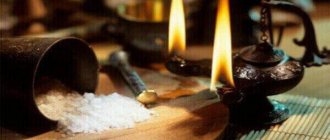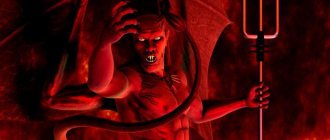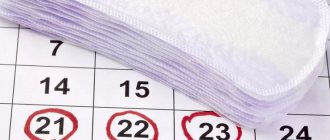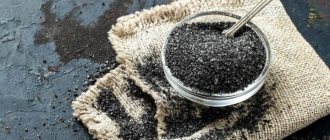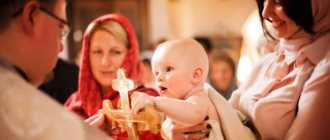At the end of the Liturgy, prosphora and antidor are distributed to all those praying in the church - small parts of the large prosphora from which the Holy Lamb was taken out at the proskomedia. Baking prosphora is by no means simple cooking: it is a task done in a special way and certainly with prayer. People who come to work usually see only its results. To find out all the secrets of the process itself, our correspondent went to the prosphora of the Holy Trinity Cathedral in Saratov.
The senior prosphora student, Galina Pavlovna Kartazaeva, has been working here for nine years.
A process engineer by training, she never thought that her job would ever be related to baking bread. “I used to work in my specialty at a factory,” says Galina Pavlovna. — In the early 90s I came to faith and over time I realized that I wanted to be closer to the Church. I was thinking about getting a job as a candle maker in the Trinity Cathedral, and turned to the rector - Abbot Pachomius (now the Bishop of Pokrovsky and Nikolaevsky - Ed.). He said that a person was needed in the prosphora department, and blessed me to go there. Although this obedience was completely new to me, I took on it with joy.
The prosphora of the Trinity Cathedral serves 33 churches. These are mainly churches in the regional center and Saratov region. There are four more prosphora in Saratov - at the Church of the Nativity of the Virgin Mary, in the Intercession, Kazan and Spiritual Churches.
“Their production volume is much smaller,” explains Galina Pavlovna. — The main burden is on our temple. We do not refuse anyone, no matter which priest from which church asks, we try to fulfill his request.
The main assistant in mastering a new profession for Galina Pavlovna was the book by Deacon Oleg Starkov “Take, eat: this is My Body, which is broken for you...” - a textbook for everyone who wants to learn how to bake prosphora for the Divine Liturgy.
— The book describes the whole process. But the most important thing is, of course, practice. It's one thing to read, another to do. I tried to organize the work strictly in accordance with what was written in the book, but each prosphora still has its own subtleties. We produce a large volume - this is one technology, someone bakes less prosphora or, conversely, many times more - everything will be a little different there. In my work, I try to take into account two factors - firstly, high-quality products, and secondly, the normal employment of people, that is, we need to structure the process so that they do not get too tired, because the work is very hard.
Along with Galina Pavlovna, there are four more people on the prosforni staff. They work three days a week - on Tuesday and Wednesday they bake service prosphora (700-800 pieces), and on Thursday - small prosphora (6-7 thousand in one day). It is difficult to make a large, service prosphora - this is the job of professionals, but a small one - on the contrary, it is simple. Therefore, every Thursday parishioners of Saratov churches come to the aid of prosphora workers.
The working day in prosphora begins at eight in the morning. One of the workers comes at seven and puts the dough in the dough mixer.
“Lean dough - flour, water, yeast and salt,” says Galina Pavlovna. — Flour gluten is of great importance for the quality of the dough. It is difficult to find flour of the required characteristics, so we try to use the same one - “Aleika”. But even with it it turns out differently every time, although it seems like we put the same dough every day.
Before starting work - general prayer. Workers pray to Saints Spyridon and Nikodim, prosphora bearers of Pechersk.
After an hour or twenty, the dough is ready, and the process itself can begin. Today we will bake service prosphora. Andrey, one of the prosphora workers, rolls a layer of dough on a roller. Externally, the rollers resemble a roller: two rollers rotating in opposite directions capture and process the dough passing between them. The resulting cake should be elastic, for this Andrey rolls the dough about twenty times. The more elastic the cake, the easier it is to form the prosphora later.
“When I came to the prosphora clinic, women were doing this operation,” recalls Galina Pavlovna. “But physically it’s very difficult, not every man can handle it.” In addition, you need speed: the faster the dough layer is scrolled, the better it will turn out.
The first cake is ready, and Andrey carefully lays it out on the table. Four women use a special shape to cut out circles from it - like those we usually cut out with a glass when we make dumplings at home. These are blanks for the lower part of the prosphora. The workers form balls from them and begin to twist them.
If you look from the outside, it couldn’t be simpler. You roll the lump of dough on the table until it turns into an even, smooth ball. But if you twist for too long, the prosphora will turn out pockmarked, like an orange, and this should not be allowed. And if you don’t tighten it enough, it will fall apart and be ugly.
I'll try it myself. I formed a ball, but it didn’t want to spin around under my hand! With two hands - and then barely. The dough is very dense - to roll it through, you need not only skill, but also strength.
“No one succeeds right away,” Galina Pavlovna smiles. - This takes time, and not a couple of days, but months. This confused me at first. I wanted to learn faster, but it didn’t work out. My colleagues encouraged me, I tried my best. When you try, ask God, then everything always works out. That's how I learned. At first I did it slowly, only one or two for a whole baking sheet, but then I gained more experience and was already on par with everyone else. Our hands, of course, get very tired, but we’re used to it and don’t notice.
When rolling the prosphora, no flour is used. The prosphora makers only have a cup of water on the table to smooth out any unevenness on the bottom surface. The women work quickly so that the dough does not overcook. In 5 minutes you need to make 15 pieces - that’s exactly how much fits on one baking sheet. Then the baking sheet is covered with cellophane and put into a proofer - a special chamber where the products will be suitable. It takes them one hour and forty minutes to stand there.
In the meantime, layers for the upper part are being prepared. It’s easier for women with it - they simply use the same round shape to cut “pancakes”. The baking sheet with such preparations is sent to the next table - to Vladimir. Now he will put stamps on them. Seals for prosphora are like regular office stamps, only larger. They come in wood and metal and are produced in Sofrino.
Vladimir kneads the dough a little and rolls it in flour so that the seal does not stick. “Well, now he’ll just stamp everything in the middle, and it’s done,” I think. No! The prosphora maker places the seal on the workpiece so that it completely covers it and begins to twist. This is done to ensure that the printing on the dough is clear and uniform. And you need to hold it tightly, otherwise the print will be blurry, weaken, or simply move. Physical strength is also needed here, so it is not surprising that this seemingly simple operation is performed by a man.
“I’ve been on prosphora for a long time,” says Vladimir. “At first I just came, but now I started working all the time.” I don’t even know why I work here: probably the Lord brought me. The work is collective, everyone has their own area, but if anything happens, we can replace each other. For everything to work out well, you need to concentrate and even mentally not be distracted by anything. This is basically the same as in any job.
For a cross prosphora, you need a seal with an image of a cross in the center, and in the corners - the initial letters of the name of Christ the Savior IC-XC and the Greek word NI-KA. It means "Jesus Christ conquers." On the seal for the Mother of God prosphora there is the Star of Bethlehem and the inscription: “Mary.”
The first batch is already ready, all three baking sheets are in the proofing pan. One batch usually results in five batches. Two batches of 16 or 20 kilograms of flour are made per day. You need to form the prosphora very quickly so that the dough does not overcook.
Galina Pavlovna looks into the proofing area. Ready - ready to bake. But before that you need to connect the lower part with the upper. The older prosphora maker lubricates the lower part with water, carefully places the upper part, presses it slightly, and makes punctures with a long thin wire. The punctures are needed so that air can pass through them; without this, the prosphora will burst.
First, the prosphora is placed in the oven at 280 degrees. After two minutes they take it out and make punctures again. So - two or three times. When the prosphora holds well and tightly, they will be sent to finish baking at 150 degrees. There are just four compartments in the oven - one is heated to 280 degrees and three to 150.
Today, the regular staff of the prosphora is assisted by parishioners Lydia and Lyudmila. Lydia is also from the Trinity Cathedral, and Lyudmila is from the Church of All Saints who shone in the Russian land. They have been in the prosphora for a long time, and when one of the employees goes on vacation or more prosphoras need to be produced (as a rule, this happens before major holidays), they are called to help.
“Despite the traffic jams, their state of health, their advanced age, they still come,” Galina Pavlovna says about them with gratitude. - Responsible, they want to serve God. Mostly pensioners help us. But there are also young guys, many of them work in shifts at their main jobs. They will work their shift and if they have a free day on Thursday, when the small prosphora is being baked, they will come to us. Lida and Luda have been working for a long time, they know everything, we can’t trust any of our assistants with the official prosphora anymore. There are special requirements for it: it must be dense, without air spaces, and it is a little difficult to bake. And a small one, please! Even a beginner can easily cope with it, so the more people who come to us on Thursdays, the better. Everyone is welcome and grateful. We'll show you everything, explain everything.
While Galina Pavlovna is busy baking, the rest of the prosphora bakers are already working on the next batch. The process continues continuously, like on an assembly line. Until all the dough is processed, you can’t go anywhere.
It would seem that the work is quiet, measured (only occasionally the dough mixer hums) - this is the time for calm conversations, stories about household chores and concerns, you can even talk in secret. But there is silence in the prosphora. Why? The team was friendly, after all, after so many years together they have probably become a second family to each other.
“We try to talk only to the point,” explains Galina Pavlovna. “If a conversation suddenly starts, I interrupt it and tell the sisters that they need to pray.” We are doing God’s work, and we must do it with reverence. Why empty talk? I usually recite the Jesus Prayer to myself. We also have a tape recorder - we listen to the holy fathers, record the conversations of the priests, which are broadcast on Soyuz, and then turn them on here. For the big holiday we teach troparia and sing together. All this is useful for our spiritual education, it helps us tune in to the right mood, and a different state immediately arises.
The smell of fresh bread is already wafting from the oven. Ready! The senior prosphora maker takes out the baked goods, puts them in large wooden boxes lined with fabric, covers them with cotton cloth and another cellophane on top.
“It’ll cool down and I’ll take it apart in the morning.” Place in cloth bags which temple ordered how many. On Friday the priests will come to pick up the prosphora. Usually each temple borrows for a week, and they start distributing it on Saturday. For litia, they also order bread - these are small buns, made like the lower parts of service prosphoras.
Prosphora are consecrated during the celebration of proskomedia - the first part of the Liturgy. For proskomedia, five prosphoras are used in memory of the Lord’s miraculous feeding of more than five thousand people with five loaves. Actually, for Communion one prosphora is needed, according to the words of the apostle: There is one bread, and we, many, are one body; for we all partake of one bread (1 Cor. 10:17 ). From this prosphora the clergyman cuts out the Holy Lamb - the middle quadrangular part. At the same time, words are pronounced from the prophecy of the Old Testament prophet Isaiah: Like a sheep led to the slaughter, and like a lamb without blemish, the one who shears it is speechless, so he does not open his mouth; in humility His judgment will be taken; Who will confess His generation? as if His belly were lifted up from the earth (Isa. 53 :7-8).
The second prosphora is called the Mother of God; one particle is taken out of it in honor of the Mother of God. The third prosphora is nine-ranked, in honor of all the saints, whose faces consist of nine ranks. Nine particles are taken out of it in honor of John the Baptist, the prophets, apostles, saints, martyrs, saints, unmercenaries, Godfather Joachim and Anna, and the saint in whose name the Liturgy is celebrated. From the fourth prosphora, particles are taken out for the living, from the fifth - for the dead.
Prosphora can be stored for a long time: if the necessary conditions are met, three to four weeks. To do this, they are placed in a canvas bag, and then in a plastic bag, tied tightly so that air does not pass through, and put in the refrigerator. Then it won’t dry out and won’t mold.
Galina Pavlovna rubs the vacated hot baking sheets with wax.
— We don’t use butter when baking. Only wax. I rub it with a clean napkin and leave it to dry. If you do not grate, the prosphora will stick to the baking sheet. Because of this simple procedure, the smell of our prosphora is so tasty, as if we were baking not from lean dough, but from butter dough - with butter and sugar.
The hardest time for prosphora makers is before Easter. The volumes are very large; we have to work from 7 am to 10 pm.
“For Easter we also bake artos, they weigh 3–3.5 kilograms and bake for four hours. This year we baked 90 artos. Other prosphorni, for comparison, are baked in 10 pieces. This is the difference in volumes. But we, of course, do not complain.
Despite the serious workload, Galina Pavlovna likes this work.
“Although it’s complicated and difficult, sometimes it even takes me into despair, but I still like it here.
Prosphora
Therefore, prosphora became an integral part of church liturgical life. And since the Church cannot exist without the Liturgy, such obedience as baking prosphora has special significance. Then I wonder how this was accepted in Rus'?
In ancient times, everyone could bake prosphora, as it was considered an offering to the temple. The best were selected from these offerings, and the Divine Liturgy was served on them. At that time, almost all housewives knew how to bake bread. Being churchgoers, they knew that to bake prosphora you needed leaven, salt, water and flour. Any housewife could bake prosphora at home and bring it to the temple.
In Greece, for example, today you can buy it in a store and bring it to the temple as an offering.
Meaning of the word
First, let’s find out more precisely, prosphora - what is it? The word itself has ancient Greek roots and is translated as “offering.” Its second name is bread for the liturgy, liturgical. The main purpose is to use it during the Eucharist for consecration and consumption together with wine as a particle of the body and blood of Christ. Prosphora is also widely used for the Proskomedia ritual. What does this mean: during a special liturgy, the birth and death of Christ are remembered, and all Christians, living and dead, are remembered. The basis of the ritual, in addition to the words of Jesus spoken at the Last Supper, is also the miracle when He fed thousands of hungry people with several loaves of bread. But long before the Nativity of Christ, sacrificial prosphora was mentioned in the Old Testament texts. What kind of bread it was supposed to be was stated directly: leavened, that is, yeast. This is written about in the Book of Leviticus. In the Mosaic tabernacles (camp temple), sacred bread was also used, only unleavened, prepared in a special way. Its two parts signify the human, earthly beginning and the higher, heavenly one.
How to bake?
Throughout the Orthodox world, prosphora has been baked with prayer since ancient times. And only the prosphora students themselves know how hard and responsible work this is. The responsibility is only aggravated by the fact that prosphora is liturgical bread. And this requires that it be prepared in the best possible way.
In monasteries, the reverent and prayerful attitude towards prosphora never ceased. This process began to be equated with real church art.
And here, too, you need to know what kind of flour the prosphora is made from, and what kind of yeast it should be. If we talk about American flour, then to achieve a snow-white color it is often bleached with chlorine, and in fact it is not suitable for baking prosphora.
Many housewives like to use French yeast, but they are also not suitable for baking, since when fermenting they immediately produce a lot of carbon dioxide, and for baking a large batch of prosphoras at the same time this is a disaster. After all, it will be impossible to keep track of the dough - the yeast will “run away”. Therefore, it is best to use our domestic yeast.
Liturgical liturgical bread
In the life of the Monk Zosima, the Solovetsky wonderworker, there is the following story: once the monk gave a prosphora to some visiting merchants as a blessing from his priestly service; on the way from the church they dropped it. Monk Macarius happens to pass by and sees: a dog is standing over the prosphora and is trying in every possible way to grab it with his teeth, but every time fire comes from the holy bread and scorches the dog. Macarius comes closer - the fire is no longer visible. Having made the sign of the cross, the monk takes the prosphora and takes it to the holy elder. This is the sacredness of the prosphora received from the altar of the Lord. And thank God: Orthodox Russian people love and reverently honor this shrine; with all their zeal and heartfelt faith they bring prosphora to the proskomedia for the health and repose of their loved ones; with reverence they then partake of these sacred breads for the health of soul and body. But does everyone know what prosphora is? Why are prosphora brought to the Divine Liturgy? And is there any difference between them? The word prosphora is Greek and means in Russian: offering. In the East, in the Greek Orthodox Church, the liturgy is celebrated for the most part only on one prosphora, which has five seals. Here in Russia, we use five separate prosphoras for this. Actually, to celebrate the Sacrament of the Body and Blood of the Lord, one prosphora is needed, from which during the proskomedia the Holy Lamb is taken out, that is, that holy bread that during the Divine Liturgy is transubstantiated or, by the mysteriously incomprehensible action of the grace of God, transformed into the very Body of our Lord Jesus Christ (so the same as wine - into the Most Pure Blood of the Lord). The remnants or trimmings of this holy bread are called “antidor”, which translated from Greek means: “instead of a gift”, because the antidor after the liturgy is distributed to those who have not received the Holy Mysteries. Of course, the antidoron, in itself, cannot replace Divine Communion, for nothing either in heaven or on earth can replace the Life-giving Mysteries of Christ; however, the holy antidoron serves as a gracious consolation and sanctification for Orthodox Christians, just as they are sanctified by drinking, for example, the holy water of Epiphany. Church rules command that one must eat the holy antidoron on an empty stomach, before eating any food, and it is best to consume it in church, without taking it home. Giving antidor to infidels, as well as those under penance, is strictly prohibited. All this shows that of all the prosphora offered at the Divine Liturgy, the holy antidoron is the most sacred prosphora, because part of it was taken in remembrance of the Lord and God and our Savior Jesus Christ Himself.
The second prosphora is brought in honor and memory of our Most Blessed Lady Theotokos and Ever-Virgin Mary. Nine particles are taken from the third prosphora in honor and memory of all the saints glorified by God (in common parlance it is called the nine-piece). From the fourth prosphora, particles are taken out about the health and salvation of all living Orthodox Christians, starting with His Holiness the Orthodox Patriarchs, the Holy Synod and the Sovereign Emperor. From the fifth - about the memory and forgiveness of sins of all our fathers and brothers who have died in the Orthodox faith. These are the five prosphoras that are needed to celebrate the liturgy according to the rites and rules of our Orthodox Church. All other prosphoras, no matter how many there are (in holy monasteries, on major holidays, several thousand of them are brought), have the same meaning as the last two: particles are taken out of them for living and deceased Orthodox Christians by name. All these particles, starting with the particle taken out from the second prosphora in honor and memory of the Mother of God, and ending with the particle taken out for every Orthodox Christian, during the proskomedia are placed in a special order on the paten next to the Lamb, and at the liturgy, after the consecration of the Holy Mysteries, they descend into the Holy Chalice and immerse themselves in the Most Pure Blood of the Lord Jesus Christ, with the words: “Wash away, Lord, the sins of those here remembered by Your honest Blood!” That is why all the prosphoras from which these particles are taken are sacred bread, like the remnants of our feasible offering to the Lord - the One Eternal Bishop, who offered Himself as a sacrifice of atonement for the sins of the whole world on the altar of the cross. Our Lord suffered for us all; none of the people can be saved unless their sins are washed away by the Honest Blood of Christ the Savior; all the saints of God, even His Most Pure Mother Herself, through Him, our Only Savior, entered into the glory of His Heavenly Kingdom. Therefore, all prosphoras, except for the antidoron, essentially have the same meaning: the particles taken out of them represent all people redeemed by the Blood of Christ. Of all the prosphoras, church rules distinguish only the Mother of God, due to its special reverence for the Most Pure Mother of God, more honorable than the Cherubim and Seraphim and venerable above all the saints of God. Church rules prescribe this prosphora to be shared by those present in the church together with the holy antidoron, as if to remind the believers that after the Ascension of the Lord into heaven, the Mother of God remained with the believers for their consolation. Of course, the nine-piece prosphora for the sake of the honor of the saints of God cannot be compared with those from which particles were taken out for us sinners; however, church rules do not say anything special about this prosphora, and therefore it is not appropriate to attribute special power or special significance to it. Unfortunately, there are unreasonable people who try in every possible way to get exactly this nine-item prosphora; They attribute some special power to it to heal from all sorts of diseases and they think that they will not receive this benefit from another prosphora. Strange reasoning! Do they really think so because nine—precisely nine—particles were taken out of this prosphora? But is God’s grace commensurate with the number of particles taken out?.. To think so means to insult God’s grace. And if they say that this prosphora is important because it is offered for all the saints of God, then why do they forget about the Mother of God, our zealous Intercessor?.. Which of the saints of God can compare with Her in Her love for the human race, in Her Motherly boldness towards Lord? In our ancient chronicles there is the following legend: since childhood, one pious man had the custom of accepting antidor and Holy Bread from the priest. He ate them after mass before dinner. One day he was invited by some acquaintances to dinner; During lunch, the priest who was here distributed the Most Pure Bread, part of which the blessed husband now took. This time he did not eat the bread, but tied it in a scarf to eat it the next day at home, where he went. The path was long, and our traveler, before reaching his yard, felt tired and lay down in an empty place. Not far away, however, there were people's houses from where he was spotted. He fell asleep soundly; the handkerchief with bread was in the hand of the sleeping man; and behold, by the devil's delusion the dogs approached and, feeling the bread, wanted to snatch it out of their hands, but immediately a fire appeared from the bread and scorched them, and this was repeated as many times as they tried to get to the bread. People who were watching the sleeping man from their houses came to drive away the dogs and wake him up, but the awakened man himself had already seen the miracle taking place. The Archbishop of Novgorod was told about this. He ordered to build a church in this place in honor of the Nativity of the Most Pure Mother of God, at which a maiden monastery was then built, and a holy throne was erected in the place from which the fire came out. This is the church on Molotkovo, in Veliky Novgorod, on the Trade Side (Complete Collection of Russian Chronicles, III, p. 218). Please note that in this legend we are not talking about the prosphora from which a particle is taken out during the liturgy in honor and memory of the Mother of God, but about the Most Pure Bread, which is now shared in the monasteries at a meal in memory of the appearance of the Mother of God to the apostles on the third day after Her. honest Assumption. This bread is eaten after lunch, and the Mother of God prosphora should be eaten on an empty stomach. Taste it, beloved brother, with faith in the great intercession of the Mother of God, and according to your faith this taste will be for the health of your soul and body. Do not philosophize according to your intelligence; Do not think that there is more grace in that prosphora, from which more particles are taken out; The grace of God is not measured by the number of particles, and to think so means to sin the sin of superstition. Every prosphora taken from the altar of the Lord is a shrine; but the prosphora of the Theotokos is a shrine par excellence, as imprinted with the name of She Who is preferred in honor above all the saints of God.
How prosphora is baked in monasteries
Using the example of the Kiev Pechersk Lavra, I would like to tell how the main Lavra prosphora bearer with the brethren and novices, after praying, at half past four in the morning begins to knead the dough for the prosphora. It’s hard to imagine that 7,500 prosphoras were prepared at one time.
They are baked three to four times a week. On holidays, the number of prosphoras increases. And of course, it is not possible to perform this process manually, so the brethren use technology.
Premium flour is poured into a special dough mixer, followed by water with yeast and salt. In the monastery, water is delivered from the springs of St. Anthony and Theodosius of Pechersk.
In five minutes the machine makes a batch, of which there are only three. The kneaded dough is placed in a wooden trough and left there until three o'clock in the morning. This is done so that it can sour and increase in volume.
Step-by-step preparation
Step 1:
Place (large) salt and about a cup of flour in a dough bowl. Pour boiling water over and stir. This is a custard dough, it should be slightly thicker than pancake batter. Brew and let cool.
Step 2:
Add yeast to half a liter of water. Without stirring, let sit for a minute; the yeast will settle to the bottom.
Step 3:
After this, stir and leave for 5 minutes.
Step 4:
Add yeast water to the custard mixture and stir.
Step 5:
Add flour and begin kneading the dough.
Step 6:
As the dough absorbs flour, add more and knead.
Step 7:
The dough should be as tight as plasticine. Leave the dough under a damp towel to rise. This takes from 2 to 4 hours. You can knead the dough once during this process.
Step 8:
The finished dough needs to be rolled out. To do this, the dough is laid out on the table and rolled out with a rolling pin. Then it folds in half and rolls out again. And this is repeated many times until the dough returns the consistency of plasticine. After this, pieces are measured for the bottoms (the lower part of the prosphora). Weigh the pieces - you need 20 pieces of 100 grams each. Cover them to keep them from drying out. Remove the leftovers too, they will come in handy.
Step 9:
Immediately, without letting the dough rise, roll the pieces into balls (bringing them a little closer to a cylindrical shape). Transfer the preparations to baking sheets (father prepared them - he heated them, greased them with wax and cooled them). When all the bottoms are ready, cover the baking sheets with towels - first dry and then wet.
Step 10:
For the tops, roll out the remaining dough to about 0.5-0.7 cm thick.
Step 11:
Cut out circles with a glass. Place the tops on a board and cover with towels. Leave everything to come up.
Step 12:
When the workpieces have arrived, wet the bottom with water.
Step 13:
Stamp the tops with special stamps and place them carefully on the bottoms.
Step 14:
After this, use an awl to make punctures through the top and bottom all the way to the baking sheet - this way the prosphora will not spread out during baking. Punctures are made like this - first in the center 4 times, then along the rays from the first punctures from the edges, and then along the outer edge between the first 4 punctures. Press the prosphora slightly in the center so that the top is flat.
Step 15:
Place the prosphora in the oven. Bake for 35-40 minutes at 230 degrees.
Step 16:
The finished prosphora is well wrapped in towels (bedspreads) and allowed to cool completely.
Bake in a clean kitchen, in clean clothes, with a clean soul and sincere prayer.
The matter with prayer
It is believed that prayer comes first, and then everything else. The novices begin to bake prosphora with prayer before starting any good deed and call for help the venerable prosphora makers Nikodim and Spiridon, whose relics rest in the Lavra caves. And the monastery brethren add to them the Jesus Prayer, prayers to the Most Holy Theotokos, all the reverend Fathers of Pechersk and all the saints.
The process continues with the dough being taken out of the trough and placed in the machine, where everything is well kneaded and rolled out. It is very important that the dough is stiff and that no air bubbles form in it. Otherwise, the prosphora will become distorted and may begin to crumble, and in large service prosphora, voids may appear when cut, but this should not be allowed.
Prosfornik.Ru
One of the prosphora came across this “rule”: Prayers before starting work God, be merciful to me, a sinner. (Bow) God, cleanse me, a sinner, and have mercy on me. (Bow) Who created me, Lord, have mercy on me. (Bow) Without number of sinners, Lord, forgive me. (Bow) My Lady, Most Holy Theotokos, save me, a sinner. (Bow) To my guardian angel, save me from all evil. (Bow) Holy Apostle (or martyr, or reverend father, name) pray to God for me. (Bow) Through the prayers of the saints, our fathers, Lord Jesus Christ our God, have mercy on us. Amen. Glory to Thee, our God, glory to Thee. Heavenly King, Comforter, Soul of truth, Who is everywhere and fulfills everything, Treasure of good things and Giver of life, come and dwell in us, and cleanse us from all filth, and save, O Good One, our souls. Holy God, Holy Mighty, Holy Immortal, have mercy on us. (Three times.) Glory to the Father and the Son and the Holy Spirit, now and ever and unto ages of ages. Amen. Most Holy Trinity, have mercy on us; Lord, cleanse our sins; Master, forgive our iniquities; Holy One, visit and heal our infirmities, for Thy name's sake. Lord have mercy. (Three times). Glory to the Father and the Son and the Holy Spirit, now and ever and unto ages of ages. Amen. Our Father, who art in heaven! Hallowed be Thy name, Thy kingdom come, Thy will be done, as it is in heaven and on earth. Give us this day our daily bread; and forgive us our debts, just as we forgive our debtors; and do not lead us into temptation, but deliver us from the evil one. For Yours is the kingdom and the power and the glory forever. Amen. God is the Lord and appear to us, blessed is he who comes in the Name of the Lord, bless us who come in Thy Name, to Thy Glory. Amen. Troparion, Tone 4, O God, Creator and Creator of all things, the work of our hands, begun for Thy glory, hasten to correct with Thy blessing, and deliver us from all evil, for the only one is omnipotent and Lover of mankind. Kontakion, Tone 3, Quick to intercede and strong to help, present yourself to the grace of Your power now, and bless and strengthen, and bring about the good work of Your servants to complete the good intentions: for all that you want, for the mighty God is able to do. Troparion of St. To Spyridon and Nicodemus Create offerings of bread with your hands, unceasing psalmody with your lips as a sacrifice of praise to the Lord, with the honorable Nicodemus, blessed Spyridon, with him pray to Christ God for our souls. Kontakion May you show your kindled love for the Lord, wonderful Spyridon, blocking the fiercely kindled furnace with your mantle and may you show the source of the waters of the gifts of the spirit living in you; with your clothes, carrying water, you extinguish the flame of fire, because you have boldness towards the Lord; with blessed Nicodemus we pray ever for us who sing thee. Glory, even now: Kontakion, voice 6. The intercession of Christians is not shameful, the intercession to the Creator is immutable, do not despise the voices of sinful prayers, but advance, as the Good One, to the aid of us who faithfully call Ty; hasten to prayer and strive to supplicate, interceding always, the Mother of God, those who honor Thee. Prayer Lord Jesus Christ, the Only Begotten Son of Your Fatherless Father, You declared with Your most pure lips: that without me you cannot do anything. My Lord, Lord, with faith in my soul and heart spoken by You, I fall down in Your goodness: help me a sinner to complete this work, which I have begun, for You, in the name of the Father and the Son and the Holy Spirit. Amen. At the end of every task, Troparion, tone 4 Give thanks to Thy unworthy servants, O Lord, for Thy great good deeds upon us, glorifying Thee, we praise, bless, thank, we sing and magnify Thy compassion and slavishly cry out to Thy love: To the Benefactor, our Savior, glory You. Kontakion, voice 2 of Your blessings and gifts, as a servant of indecency, having been vouchsafed, O Master, we earnestly flow to You, giving thanks according to our strength, and to You, as we glorify the Benefactor and Creator, we cry out: glory to You, All-Bounteous God. Glory, and now: Theotokos, voice 6 to the Mother of God, Christian Helper, Your servants, having acquired Your intercession, gratefully cry out to You: Rejoice, Most Pure Virgin Mother of God, and always deliver us from all our troubles with Your prayers, the only one who will quickly intercede. You are the fulfillment of all good things, O my Christ, fill my soul with joy and gladness and save me, for I am the only one who is most merciful. Prayer Fulfillment of all good things You are, my Christ, fill my soul with joy and gladness and save me, for I am the only One who is most merciful, Lord, glory to You. It is worthy to eat as you truly bless Theotokos, Ever-Blessed and Most Immaculate and Mother of our God. We magnify You, the most honorable Cherub and the most glorious without comparison Seraphim, who gave birth to God the Word without corruption.
We will try to answer the question in detail: prayer for baking prosphora on the website: prayer-to-god.rf - for our dear readers.
Formation of prosphoras
Some form the lower parts of the prosphora from rolled dough 2 cm thick, while others form the upper part of the prosphora, 1 cm thick. Still others set up ovens and lay them out on baking sheets, then put them on racks and send them to a special cabinet so that they rise a little more . These cabinets maintain a temperature of about 40 degrees with a humidity of 80%.
While the work is in full swing, the accomplished reader reads the monastic rule aloud. And by nine o’clock in the morning the first part of the prosphoras begins to be placed in the oven, cooking for 26 minutes. The finished hot prosphora is laid out on a table with high edges and covered with cotton cloth. When they cool down, they are immediately placed in the refrigerator for storage.
Living Prayer Word
As already noted, the entire process of working with the dough is accompanied by prayer. Prosphora is holy bread, but every matter is in dispute with God. The first prayer, traditional for any undertaking: “Lord, help!” It precedes the start of work. During the kneading, five prayers should be read, appeals to Saints Spyridon, Nicodemus and Prokhor, as well as to the Lord. When the prosphora is pierced, the action is accompanied by the traditional: “In the name of the Father, the Son...” While baking is in progress, one should read: “To the Virgin Mary...” The work ends with a grateful appeal to God. There is also a prayer for accepting the prosphora.
Products for prosphora
Now let’s get closer to what products are used for prosphora, and in what proportions. Only the highest grade quality flour is used here. Only fresh yeast is used.
And now we begin the recipe for preparing God's bread.
First you need to prepare a solution of salt and yeast, which is made in the following proportion: for 100 kg of flour - 10 liters of water, 1 kg 700 g of salt and 500 g of yeast. Add 4.5 buckets of water to this mixture. This should yield 3,750 prosphoras.
It should be noted that Lavra prosphora is very tasty. The biggest secret to making them is prayer, hard work and care, and making sure they are all cooked well.
sacrificial lamb
It should be noted that during worship, not the whole bread is used, but its particles. “With a spear” (in memory of how Christ’s heart was pierced with this weapon on the cross), the prosphora is divided into pieces that signify the Lamb of God, the sacrifice made by Jesus for the sake of people. Usually 5 loaves of bread are baked for Proskomedia. One is used as the Lamb and is given communion to the faithful during the liturgy. The rest are divided by the priest in memory of the Mother of God. They eat particles of these prosphoras, remembering her, the holy martyrs, and the compilers of the liturgy. But this number is aimed specifically at the official part of the service. For the needs of the church and parish, as many prosphoras are baked as parishioners submit notes “To health” and “To repose.”
An ancient recipe for choux pastry
If you are interested in the issue related to how prosphora is baked, it should be noted that there are several ways to prepare them. Here's another one. In this recipe, to prepare prosphora, you need to make choux pastry. Take 215 g of wheat flour and pour 320 ml of boiling water. Then we rub everything with a whisk and then, constantly stirring, add another 670 ml of boiling water.
Then divide the dough into two equal parts and leave it to cool. Meanwhile, pour 50 ml of boiled water, cooled to room temperature, take 10 g of pressed yeast or a teaspoon of dry yeast, mix thoroughly, then put the resulting mass in a warm place.
When an hour has passed, add one of the dough halves to the “awakened” yeast and leave to rise in a warm place for another 1.5 hours. At the end of this time, in order to, so to speak, “rejuvenate” the dough, you need to add another 150 g of flour and pour in 170 ml of warm water. Then mix everything thoroughly and leave in a warm place for 2 hours. Next, prepare an aqueous salt solution from 40 g of salt and 170 ml of warm water. At the end of the preparation of the prosphora dough, you need to combine the resulting dough with the unused half and an aqueous salt solution.
Ancient cult
During the time of the first Christians, believers brought food, olive oil, and wax for candles to churches or houses of worship, which were necessary for liturgies and other rituals or simply services. Prosphora was also obligatory. That this was not ordinary bread, but special, symbolic, is confirmed by such facts as, for example, the description of common meals - agapes. At the dawn of Christianity, during the era of slavery, it was customary for all members of local churches to gather to eat food together. Free citizens and slaves sat at the same table. The agapes played the role of the Last Supper, during which the Eucharist was celebrated, so the meals were strictly religious in nature. At the same time, they emphasized that in the face of Christ everyone is equal, regardless of social status. Those gathered kissed the world, prayed, and sent messages to other similar churches and communities. Later, when such “evenings” began to be held separately from the Liturgies, prosphora was not called the food brought in general, but only the bread needed for the Eucharists.
Modern recipe
Usually a very large batch is prepared in prosphora, so for 20 kg of the highest quality wheat flour you will need 250 g of salt, about 10 liters of water and up to 100 g of yeast,
Before kneading, the flour must be sifted through a sieve, the water must be filtered, then salt and yeast must be poured into it, and finally stirred. This solution needs to be poured into the flour and kneaded well at the end, then wrap it and leave it until it fits.
When the dough has doubled in size, it must be rolled out through special rollers several times, and then the resulting sheet must be passed through using a calibrating dough sheeter in which a certain thickness is set. And then you should cut the upper and lower parts of the prosphoras, then apply a seal, cover with oilcloth and leave to rise. Eventually the dough should rise and connect the top and bottom. Then you need to pierce the prosphora in the center of the seal and put everything in an oven heated to 250 degrees for 25 minutes.
After they are ready, they are left to cool for 10-12 hours, after which the prosphoras are put into containers and placed in the refrigerator.
LiveInternetLiveInternet
—Categories
- lampshade (7)
- accessories (70)
- English (14)
- applique (2)
- audiobooks (12)
- banner (9)
- video (42)
- video lesson (137)
- virtual walks (2)
- all about the lyre (29)
- how to create categories and subcategories (2)
- creation of categories and subcategories (1)
- always at hand (17)
- main courses (147)
- baked goods (488)
- embroidery (67)
- ribbon embroidery (17)
- knitting (459)
- knitting (113)
- fortune telling (31)
- generator (11)
- cottage (128)
- gardening tricks from A to Z (17)
- decor (12)
- decoupage vintage (19)
- money (32)
- diet (49)
- design, landscape (21)
- painting, pictures (7)
- animals (3)
- blanks (143)
- hair clips (8)
- health (689)
- games (5)
- icons (2)
- online store (0)
- interiors (3)
- pictures (27)
- pictures (24)
- books (4)
- buttons (4)
- leather, fur (6)
- indoor plants (21)
- computer (200)
- beauty of a woman (362)
- hairstyles (1)
- haircut (4)
- cooking (1141)
- main courses (28)
- baked goods (74)
- dessert (143)
- snacks (182)
- multicooker (35)
- drinks (45)
- salads (120)
- cakes (91)
- modeling (24)
- magic (67)
- weight loss (31)
- master classes (47)
- meditation (5)
- fashion (4)
- wisdom (83)
- self-knowledge (41)
- music (17)
- soap making (4)
- traditional medicine (115)
- about myself (0)
- ceremonies, rituals (6)
- window fruit growing (1)
- OPERA (1)
- Easter (38)
- player (0)
- gifts (64)
- paper crafts (199)
- search engine (1)
- useful (315)
- order in the house (99)
- order in the kitchen (18)
- cozy home (41)
- holidays (34)
- applied arts (5)
- parables (10)
- hairstyles (7)
- psychology (140)
- self-knowledge (77)
- frames, poems (4)
- religion (27)
- repair (23)
- handicrafts (489)
- crafts, souvenirs (15)
- beading (1)
- felt (25)
- quilling (1)
- MARTENICHKI (7)
- new year (87)
- alterations (14)
- newspaper weaving (8)
- pompoms (7)
- buttons (14)
- candles (5)
- felt (2)
- felt (1)
- runes (8)
- wedding (1)
- power of thought (7)
- tips (122)
- link (8)
- statuses (0)
- poems (42)
- construction (1)
- creativity painting (13)
- TV channels (2)
- decorations (24)
- packaging, boxes (4)
- lessons (5)
- feng shui (7)
- online movies (3)
- fitness (5)
- photography (39)
- photo tutorials (5)
- photoshop (12)
- cold porcelain (29)
- flowers (105)
- blog watch (2)
- sewing (550)
- rugs (5)
- dolls (9)
- rework (20)
- pillows (34)
- patchwork (15)
- bags (29)
- phone case (3)
- school (2)
- school (0)
- curtains (3)
- esoterics (14)
- encyclpedia (1)
- this is interesting (59)
- humor (22)
- legal assistance (2)
- lawyer (0)
-Music
—Search by diary
-Statistics
How prosphora is baked. Recipe
If you wish, you can even prepare this holy bread yourself. The question of how to bake prosphora at home is indeed often of interest to many Orthodox people.
So, for this you need to take 1200 g of flour. Pour some holy water into the mixing bowl and add 400 g of flour. Pour boiling water over it all. This is done to ensure sweetness and resistance to mold. Now stir the mixture.
When everything has cooled down, add salt, diluted with holy water, and yeast - 25 g to the same container. Stir and let sit for 30 minutes until the dough rises a little. And then add the remaining 800 g of flour, then knead again.
Leave for 30 minutes, then rub the dough well, roll out to the desired thickness and cut into circles. We make the lower part larger.
Then cover the top with a damp towel, then a dry one, and leave for another 30 minutes. We put a stamp on the top of the resulting prosphora blank. To connect the prosphoras, moisten them with warm water and place them on top of each other. And then we pierce them with a needle so that there is no formation of voids. Before baking the prosphora (and this is best done in an electric oven at a temperature that can vary), the temperature is chosen experimentally (200-210 degrees).
Place a baking sheet and bake the prosphora at home for about 15-20 minutes. The cooking recipe seems simple, but it requires some experience and skill; if you don’t have this, then you shouldn’t do it at all.
Description and meaning
The prosphora consists of two parts, which symbolize the dual essence of Jesus Christ: human and divine.
. There is a seal on top of it. Most often it is a cross, dividing it into four equal parts, on which Greek letters are written. Translated, this is the inscription “Jesus Christ conquers.” The upper part with the seal symbolizes the highest spiritual principle, the lower part - the earthly, human one.
For church services, only fresh bread is always used, because praying over stale bread is a sin.
Prosphora are used in the church during the Liturgy. There is a special service bread, it is used during proskomedia - a special part of the service. At the very end, small pieces - antidors -
. You need to accept them with reverence, folding your hands crosswise, placing your right hand on top of your left. After this, you need to kiss the hand of the priest who brought the antidor.
You can get bread in the church at the candle box after the service, passing a note for health or peace. For each name mentioned in the note, a piece of prosphora is taken out.
There are certain rules about how and when you can eat prosphora. If you brought it home, then place it only on a clean tablecloth or napkin.
. You can only eat in the early morning, on an empty stomach. Lay out a clean tablecloth, place prosphora, clean spring or holy water on it, and nothing else. Before eating, be sure to read a special prayer, thank the Lord for his mercy. It is imperative to eat over a plate or clean paper so that not a single sacred crumb falls on the table or, especially, on the floor.



